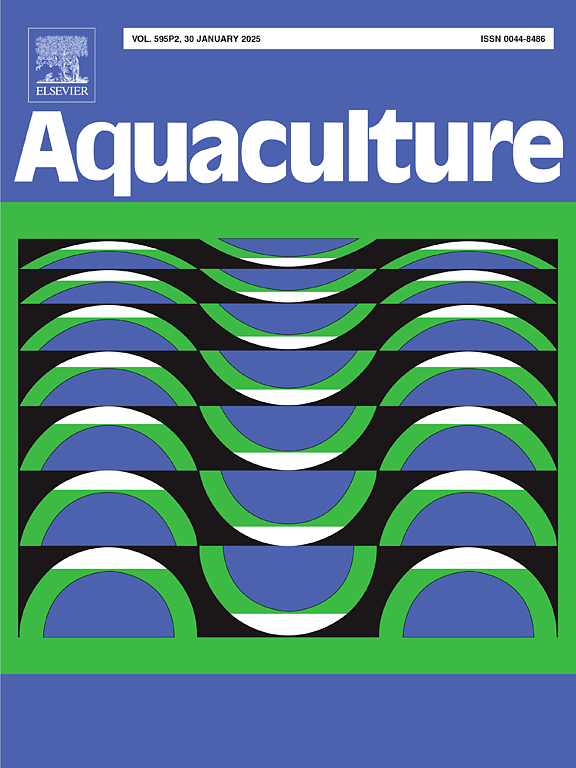Frog virus 3: Prevalence survey and quantitative analysis in American bullfrogs using TaqMan MGB probe real-time fluorescence quantitative PCR
IF 3.9
1区 农林科学
Q1 FISHERIES
引用次数: 0
Abstract
The American bullfrog (Aquarana catesbeiana) has emerged as a significant aquaculture species in China. A substantial rise in breeding density can deteriorate its breeding environment, increasing its susceptibility to diseases. Frog Virus 3(FV3) is an important pathogen of the bullfrog that can result in hemorrhage and necrosis of tissues after infection. However, our understanding of the prevalence and pathogenesis of FV3 in farmed bullfrogs remains limited. This study aimed to analyze the changes in viral load within the organs of infected bullfrogs and to investigate the prevalence of FV3 infection across various bullfrog farms, thereby providing insights into the pathogenic mechanisms of FV3. A rapid, specific, and highly sensitive a TaqMan minor groove binder probe fluorescence real-time quantitative polymerase chain reaction (qPCR) assay was developed for detection and quantification of FV3. The established qPCR method was used to study the distribution of FV3 in bullfrog tissues. It was found that FV3 could result in asymptomatic long-term persistence in tissues following infection in bullfrogs, with the liver being the primary site of replication. Furthermore, the prevalence of FV3 in bullfrog farms in Guangdong Province, a major bullfrog farming area in China, was surveyed, and it was found that the detection rate in diseased bullfrogs was 39.5 %. This study will provide effective tools for the early diagnosis and monitoring of FV3 infections, as well as provide foundational data essential for the prevention and control of the disease in bullfrog aquaculture.
求助全文
约1分钟内获得全文
求助全文
来源期刊

Aquaculture
农林科学-海洋与淡水生物学
CiteScore
8.60
自引率
17.80%
发文量
1246
审稿时长
56 days
期刊介绍:
Aquaculture is an international journal for the exploration, improvement and management of all freshwater and marine food resources. It publishes novel and innovative research of world-wide interest on farming of aquatic organisms, which includes finfish, mollusks, crustaceans and aquatic plants for human consumption. Research on ornamentals is not a focus of the Journal. Aquaculture only publishes papers with a clear relevance to improving aquaculture practices or a potential application.
 求助内容:
求助内容: 应助结果提醒方式:
应助结果提醒方式:


